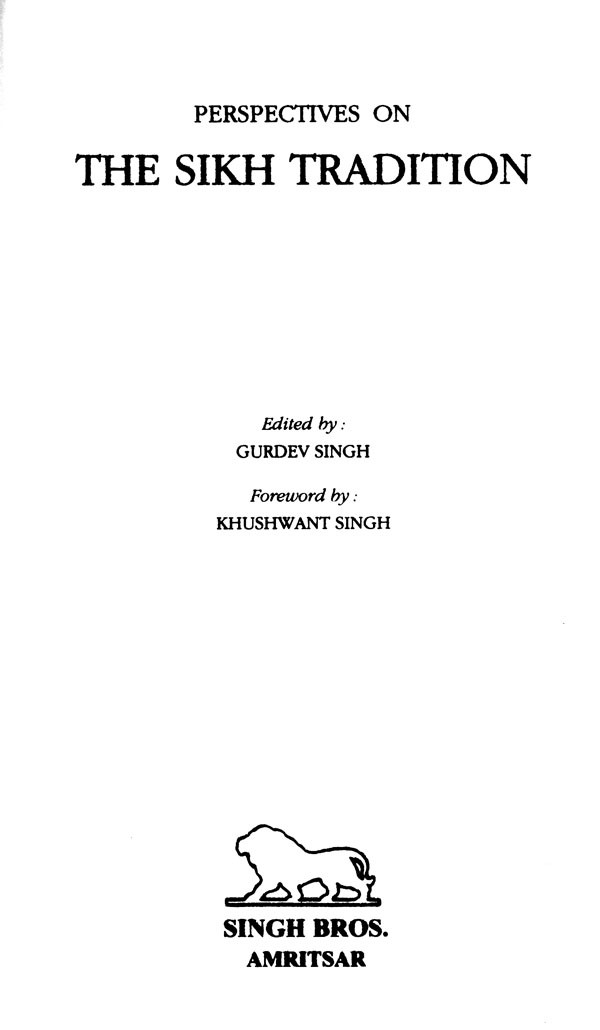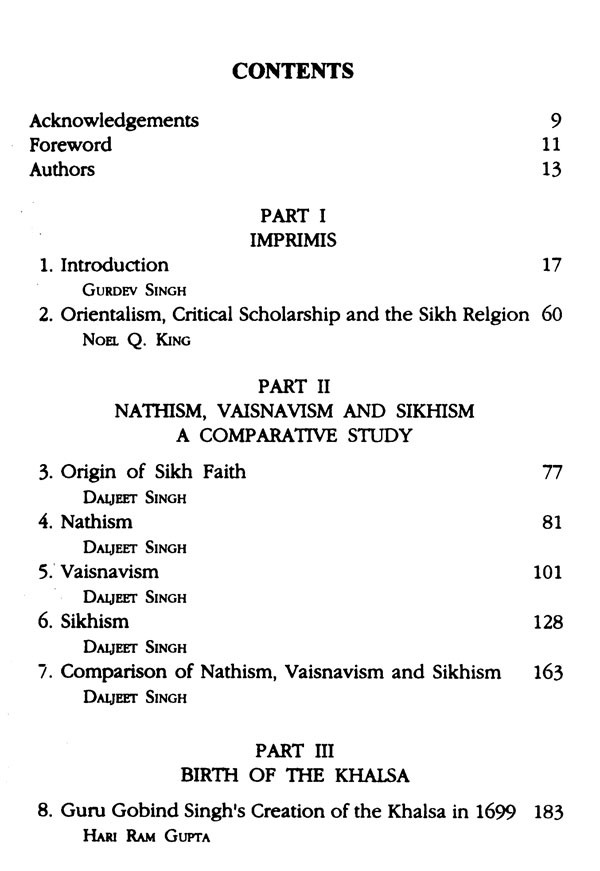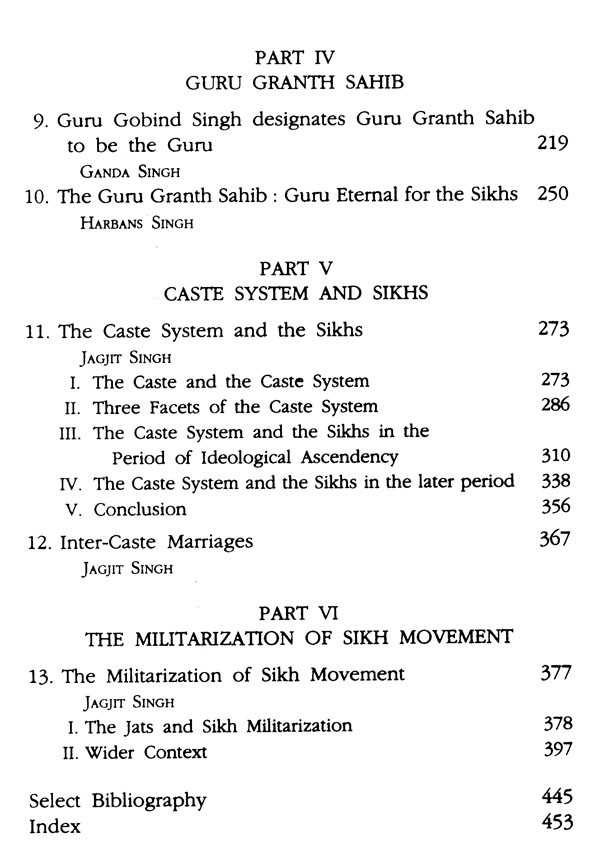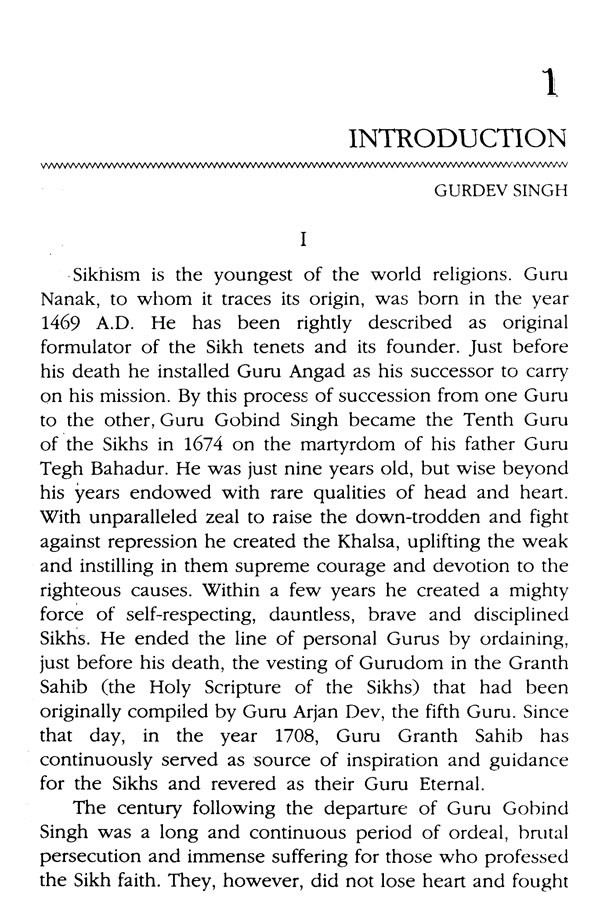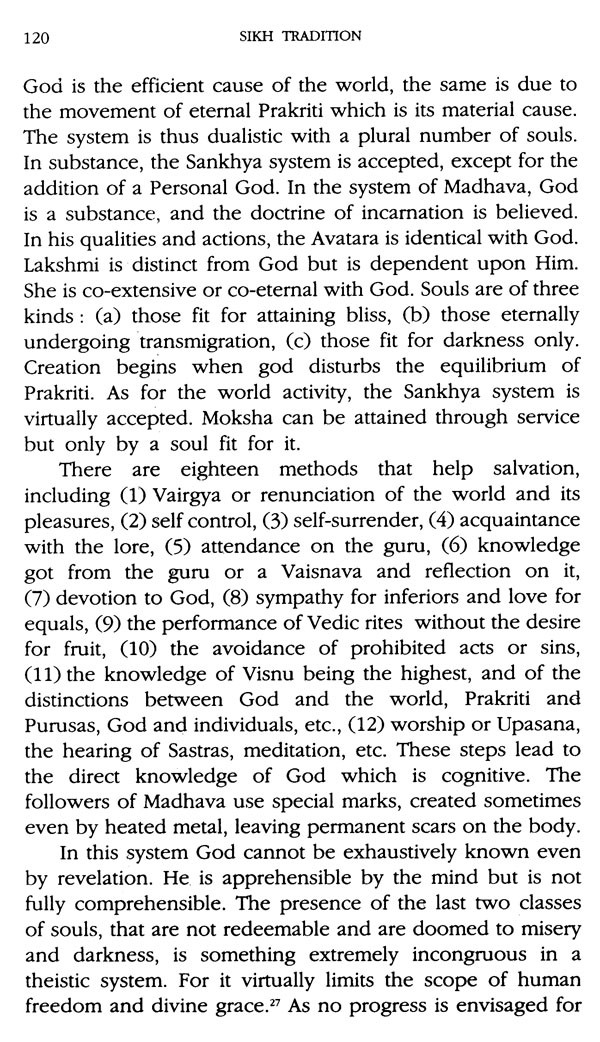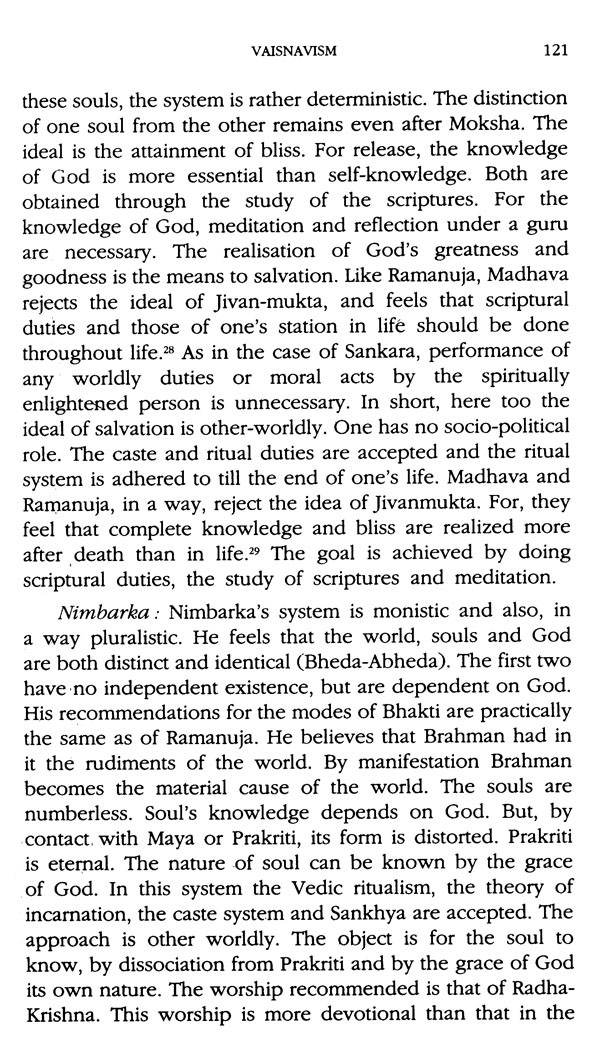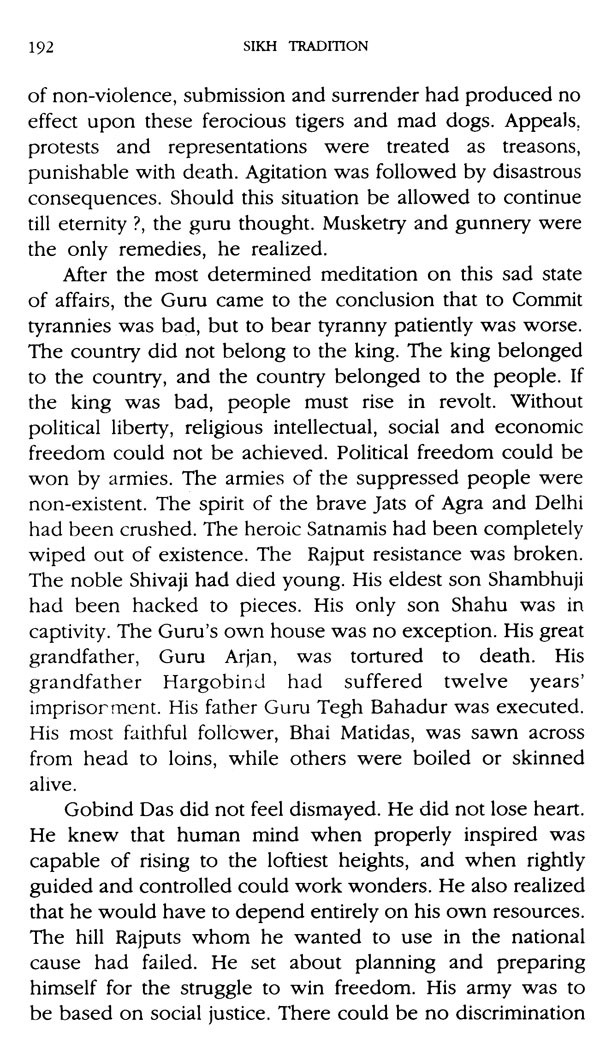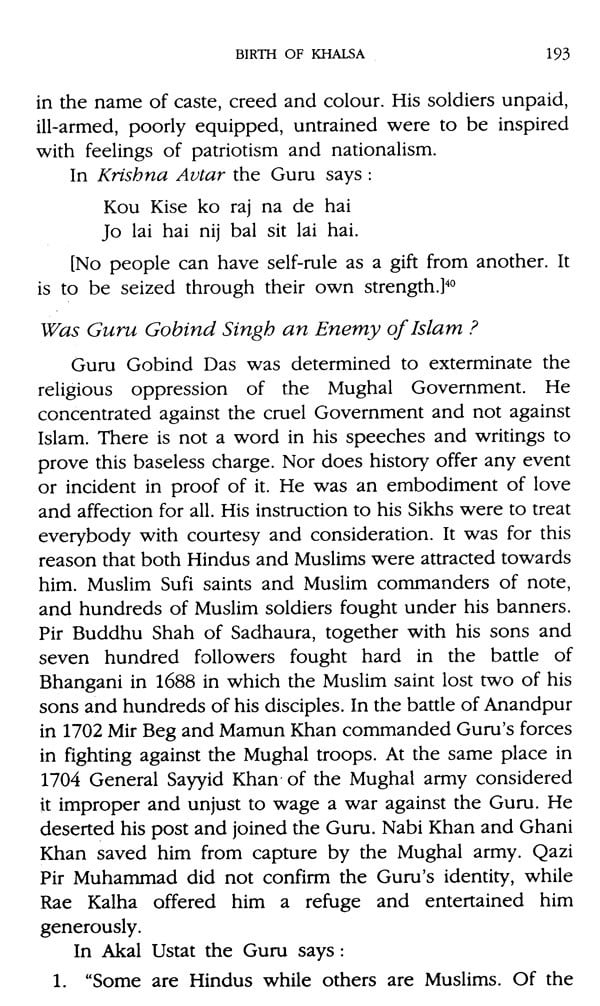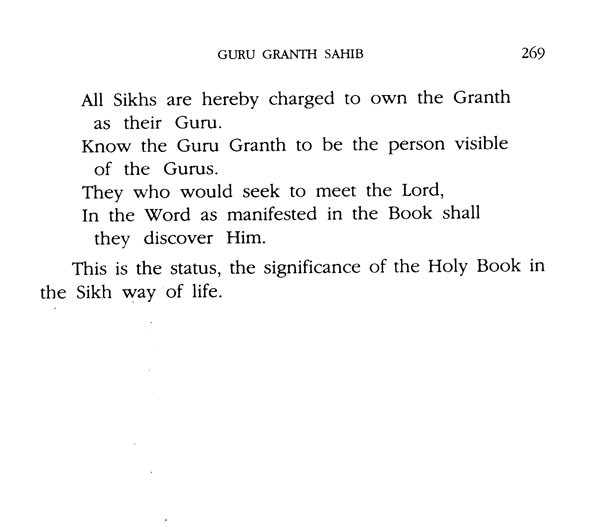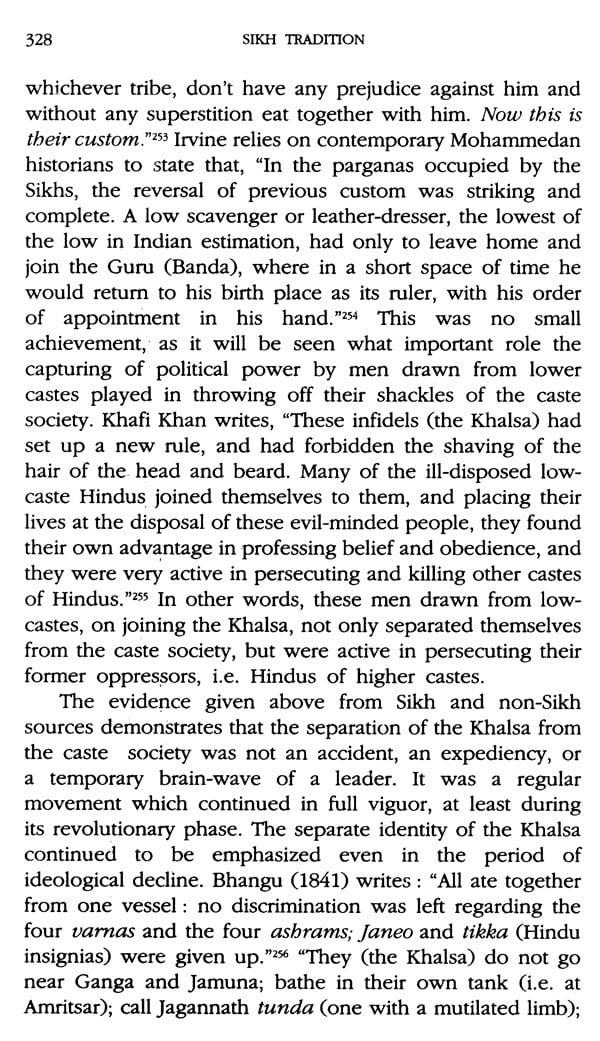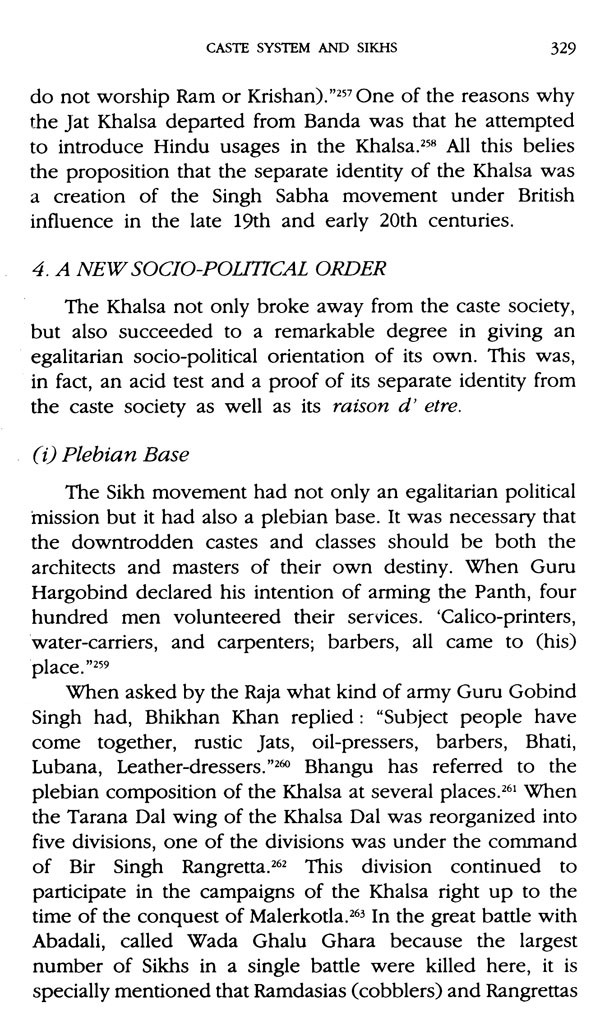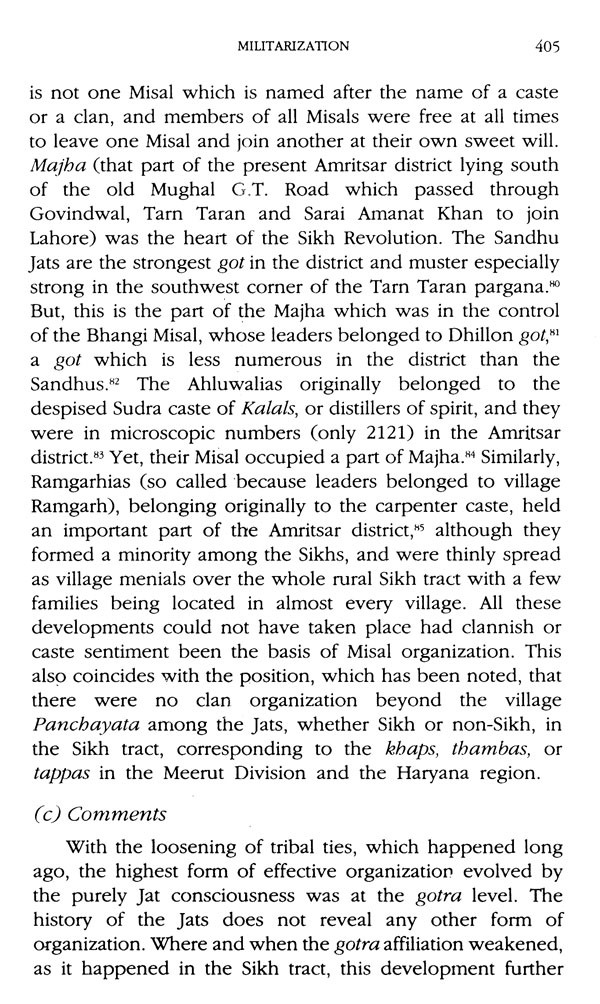Foreword In recent years a spate of books on religion and history of the Sikhs have been published in India and abroad. As far as history is concerned, most of them are a restatement of well- known facts and followed the pattern laid down by J.D. Cunningham's pioneering work History of the Sikhs published in 1899. Even on religion most Sikh scholars were content to accept narration of events set out in the Janam Sakhis and translations of the scriptures made by M.A. McAuliffe in his Volumes, The Sikh Religion published in 1909. Since these works, a great deal of research has been done by Indian theologians and historians who have vastly expanded our knowledge of Sikhism and the political, economic and social development of the Sikh community. Outstanding amongst the historians are Dr. Ganda Singh, Hari Ram Gupta, and the late Dr. Fauja Singh. Amongst those who have explored the hither to untapped material on Sikh religion, a place of honor has to be accorded to Harbans Singh who has also written on several aspects of Sikh history.
However, the most challenging event in Sikh historiography were the publications of two works by Dr. Hew McLeod: Guru Nanak and the Sikh Religion (1968) & The Evolution of the Sikh Community (1975). In his first book Dr. McLeod totally rejected the Janam Sakbis as source-material. Although most Sikh scholars had also questioned the authenticity of the Janam Sakbis, they took from them whatever they felt could be substantiated by extraneous evidence and gave credit due to accepted tradition. Dr. McLeod jettisoned the entire corpus of secondary material and came to the conclusion that since there is very little historical material in the hymns of Guru Nanak and Bhai Gurdas' Vaars, the life-story of Guru Nanak is based on fiction. He went further and maintained that Guru Nanak only stated religious beliefs current during his time and should not be regarded as the founder of a new faith.
Introduction Sikhism is the youngest of the world religions, Guru Nanak, to whom it traces its origin, was born in the year 1469 A.D. He has been rightly described as original formulator of the Sikh tenets and its founder. Just before his death he installed Guru Angad as his successor to carry on his mission. By this process of succession from one Guru to the other, Guru Gobind Singh became the Tenth Guru of the Sikhs in 1674 on the martyrdom of his father Guru Tegh Bahadur. He was just nine years old, but wise beyond his years endowed with rare qualities of head and heart. With unparalleled zeal to raise the down-trodden and fight against repression he created the Khalsa, uplifting the weak and instilling in them supreme courage and devotion to the righteous causes. Within a few years he created a mighty force of self-respecting, dauntless, brave and disciplined Sikhs. He ended the line of personal Gurus by ordaining, just before his death, the vesting of Gurudom in the Granth Sahib (the Holy Scripture of the Sikhs) that had been originally compiled by Guru Arjan Dev, the fifth Guru. Since that day, in the year 1708, Guru Granth Sahib has continuously served as source of inspiration and guidance for the Sikhs and revered as their Guru Eternal.
The century following the departure of Guru Gobind Singh was a long and continuous period of ordeal, brutal persecution and immense suffering for those who professed the Sikh faith.
**Contents and Sample Pages**
